East Kent Hospitals NHS Trust transforms mattress management with RFID technology

Building on the success of tracking medical devices such as infusion pumps, ECG monitors and beds, East Kent Trust Hospitals University NHS Foundation Trust (EKHUFT) is pioneering the use of RFID to manage one of the most fundamental – yet often overlooked – items in patient care: foam mattresses.
EKHUFT is one of the largest hospital trusts in England, delivering acute care services across multiple sites including Queen Elizabeth The Queen Mother Hospital, Kent & Canterbury Hospital, and William Harvey Hospital. The Trust has long been a leader in using technology to improve efficiency and patient safety and was one of the first in the UK to adopt RFiD Discovery’s asset tracking system to manage medical devices across its hospitals.
The Challenge
Foam mattresses are critical to patient safety and comfort, but managing them across three large hospitals is challenging. Each mattress must undergo regular inspections to prevent pressure ulcers and ensure hygiene.
The CQC (Care Quality Commission) regulations require hospitals to demonstrate when each mattress was last checked and whether it passed a defined set of safety and cleanliness criteria. EKHUFT’s previous process relied on manual checks with results written directly onto mattress covers - a method that was inefficient, inconsistent, and lacked any centralised audit capability.
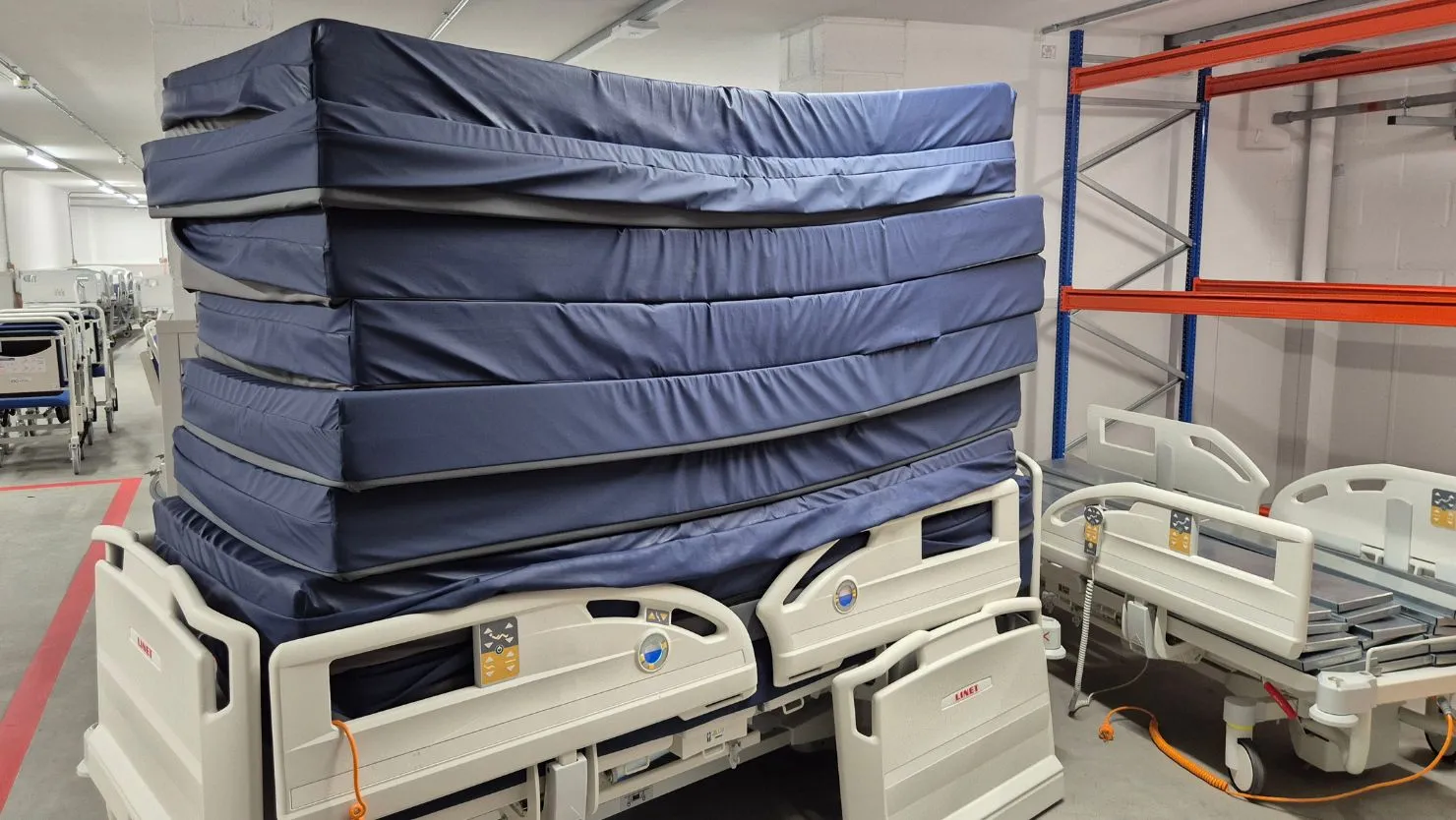
Additionally, identifying and locating individual mattresses was difficult. Manual methods like barcode scanning required physical contact or line-of-sight visibility, which posed a risk when handling contaminated or severely soiled items.
The Solution
In partnership with RFiD Discovery, EKHUFT has deployed an RFID-enabled mattress tracking system covering 1,700 foam mattresses across its hospitals. The solution leverages the existing RFiD Discovery medical device tracking infrastructure to capture mattress locations, including fixed passive RFID readers in key areas like the bed store, an RFID trolley pushed around wards during audits, and handheld RFID readers used for spot checks in smaller areas. To track foam mattresses, the following two additions were made:
- Each foam mattress is fitted with two passive RFID tags:
- An internal label, inserted inside the mattress cover at one end
- An external rubber tag containing the same unique identifier, attached to the zip via a small cable tie
This dual-tag design maximises the chances of the mattress being detected by RFID readers.
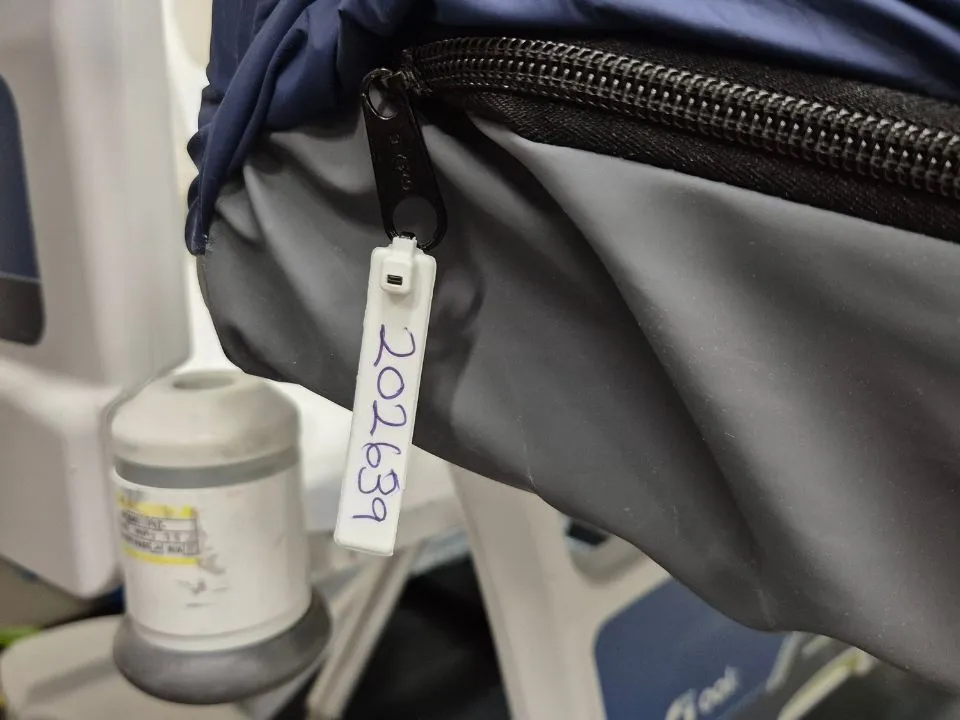
External rubber RFID tag on foam mattress
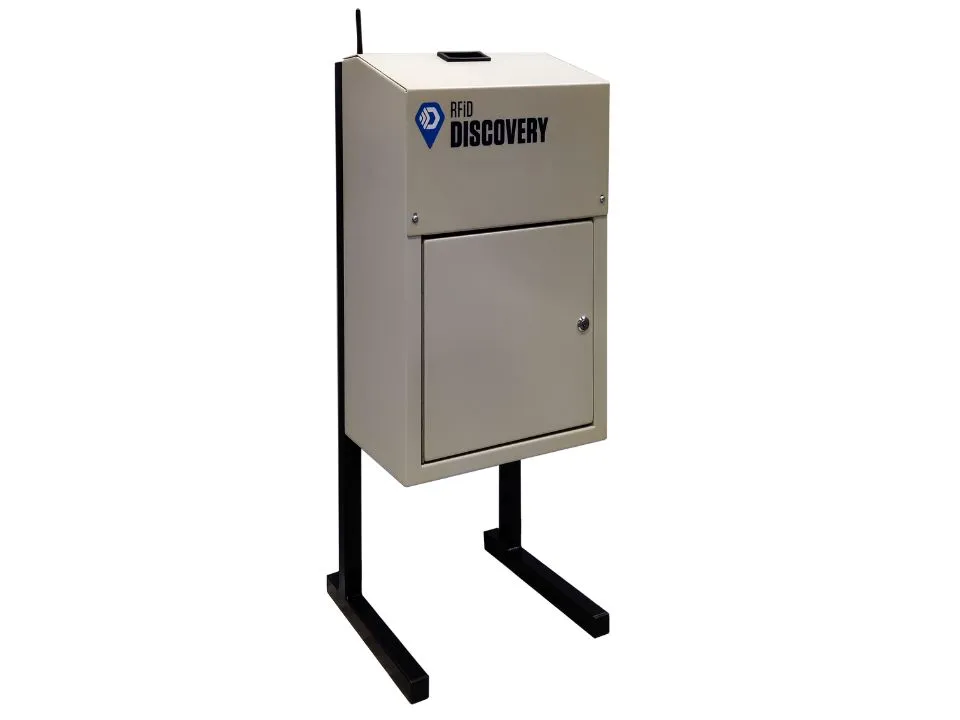
- When mattresses reach the end of their life:
- The external rubber tag is removed at the disposal point.
- It is placed into a smart RFID disposal bin equipped with internal readers.
Smart RFID Disposal Bin
As a result, the system automatically updates records, removes the mattress from circulation and provides an audit trail of disposal.
Annual Mattress Checks

Nursing teams carry out a structured seven-point mattress check each year using a dedicated app on the RFiD Discovery handheld reader.
This ensures the correct mattress is being checked by matching each RFID tag to its corresponding record in the database so that inspection results are automatically and correctly logged against the right asset.
Internal check being carried out on foam mattress
The app then guides the user through the required inspection stages which includes a comprehensive assessment of the mattress’ external condition, internal foam integrity, odour, and overall functionality.
Results are recorded directly in the system and uploaded in real time to a centralised database.
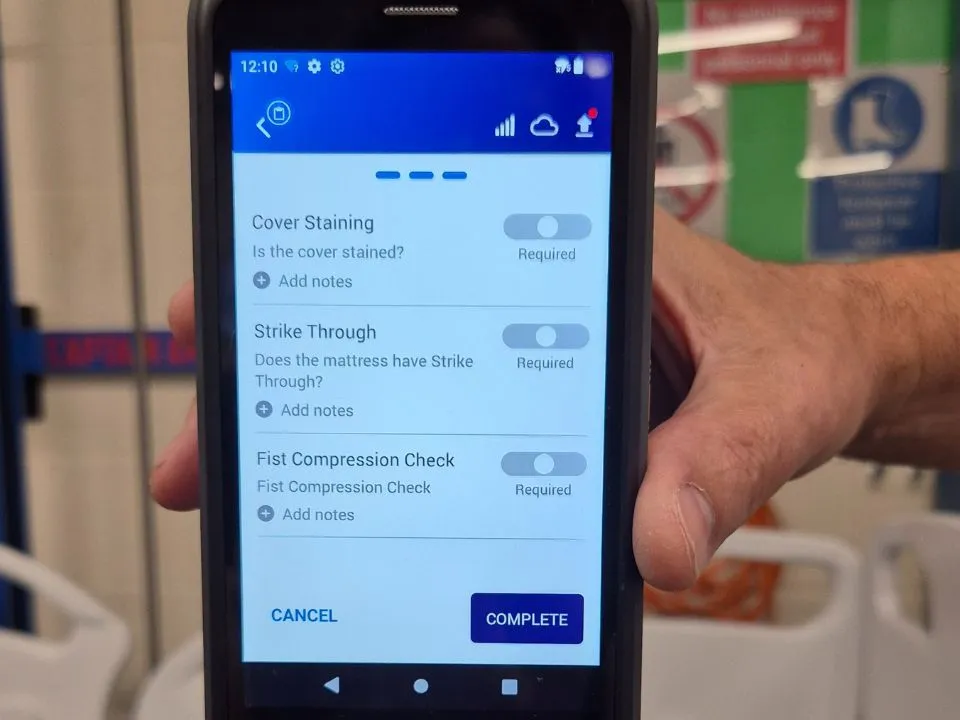
App with inspection module
The system is also used to record the result of an acceptance test when foam mattresses are first delivered, ensuring that every mattress entering circulation meets quality and safety standards from day one.
The Benefits
The implementation of RFID mattress tracking has delivered several key benefits:
- Compliance & Assurance
The Trust can provide digital evidence of inspection and disposal to the CQC and internal auditors, strengthening accountability and providing full traceability. - Patient Care and Safety
By making it easy to locate mattresses due for inspection the solution helps to ensure that all are checked as required. This means faulty or contaminated mattresses can be identified and removed, reducing risks of infection and pressure ulcers.

This technology has transformed the way we manage our foam mattresses. We now have complete confidence that every mattress is tested, tracked, and either maintained or disposed of appropriately, helping us keep patients safe while improving efficiency.
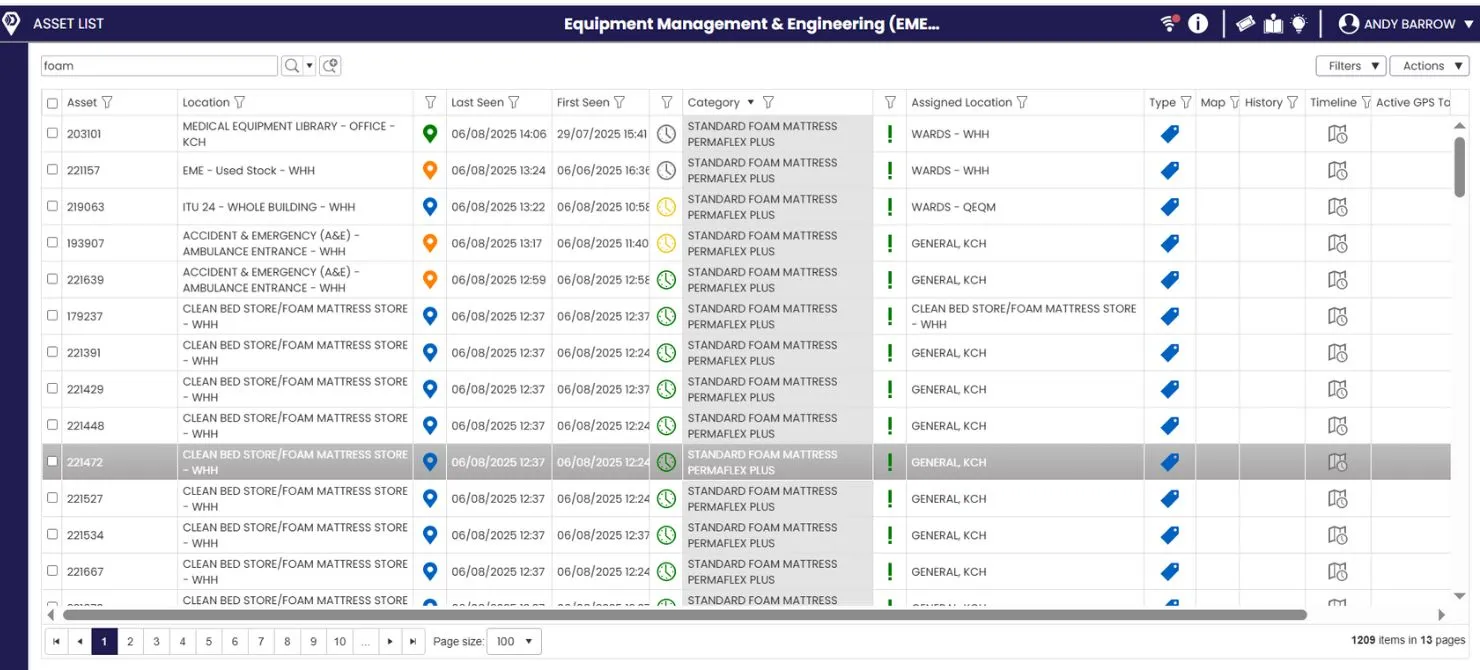
RFiD Discovery software - Overview of mattresses - List view
- Operational Efficiency
Automating mattress identification and disposal tracking eliminates manual record-keeping and reduces administrative burden, while the ability to locate mattresses quickly saves time to improve efficiency. - Infection Control
RFID readers can scan and identify mattresses without requiring physical contact or visual access to tags - ideal for infection control when dealing with contaminated or severely soiled mattresses. - Asset Visibility & Future Planning
By automatically capturing accurate information about mattress status and disposal, the system provides accurate data of available, in service or unfit-for-use mattresses to assist planning and inform procurement decisions.
Conclusion
By extending the use of RFiD Discovery’s passive RFID system from tracking medical devices to everyday patient care assets like foam mattresses, East Kent Hospitals NHS Trust is demonstrating true innovation in healthcare asset management. Above all, the approach safeguards patients and also ensures the Trust meets regulatory requirements while maximising operational efficiency.
This pioneering initiative is setting a new standard for mattress management within the NHS, offering a model that other healthcare providers can replicate.


